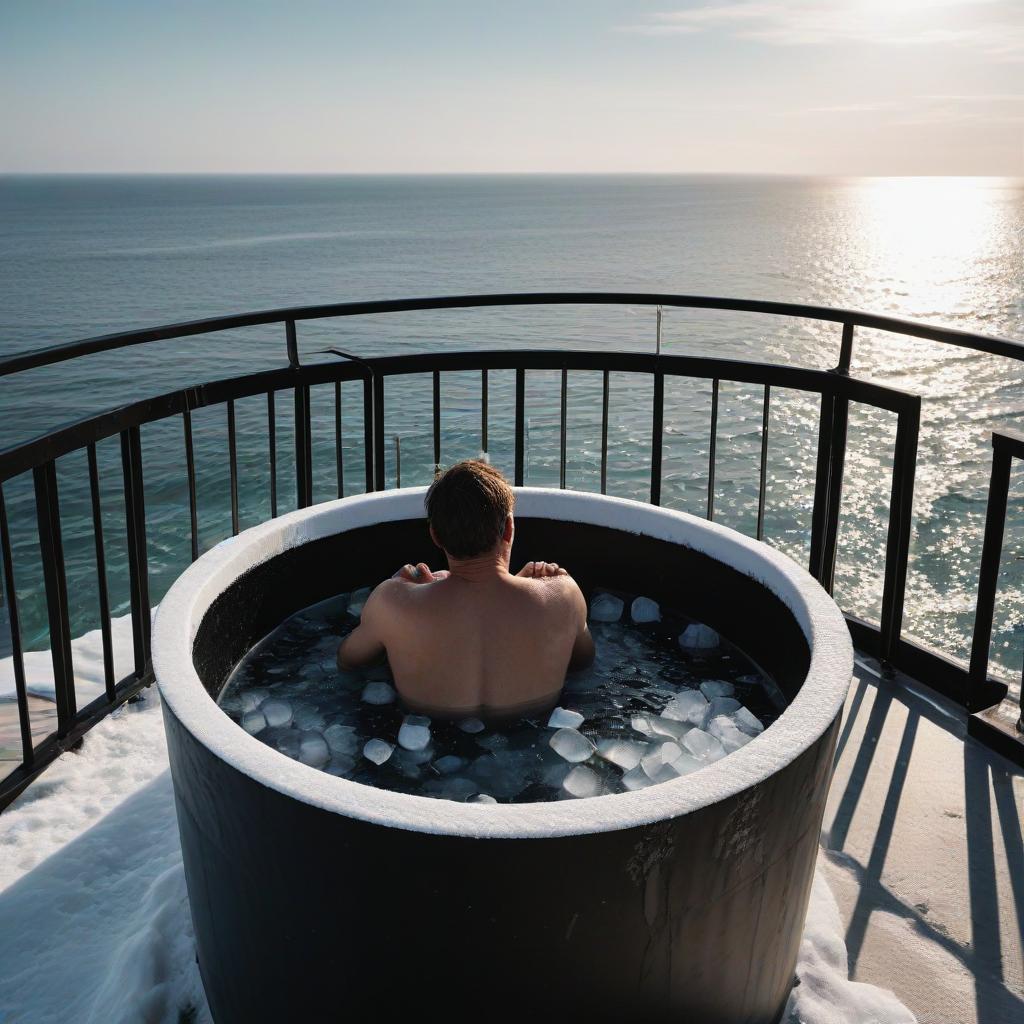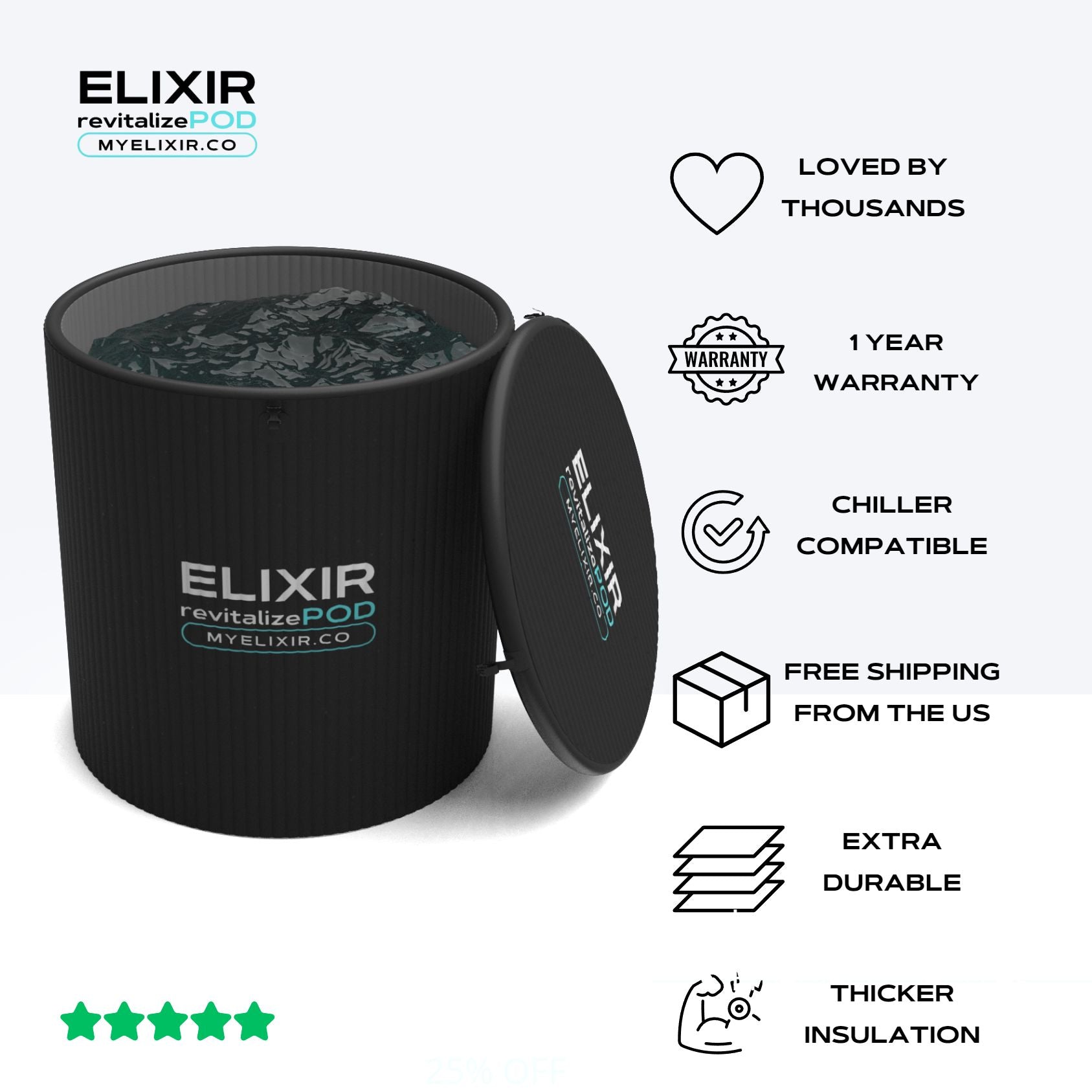If you've been keeping up with wellness trends, you've likely heard the buzz about ice baths. They're gaining popularity for their impressive benefits, including reduced stress, decreased muscle inflammation, improved metabolism, and even enhanced mood and heart health.
But let's face it – taking the plunge into icy water is no simple task. Without the right breathing techniques, it can feel even more challenging than it should. Mastering these techniques not only helps you feel more in control but also allows you to maximize the benefits of your cold therapy experience.
Here are six effective ice bath breathing methods to try, ensuring you're well-prepared for your next dip into the cold.
- Deep Breathing
This is a great starting point for anyone new to ice baths. Deep breathing is simple yet incredibly effective. The key is to focus on taking long, slow breaths.
To begin, inhale deeply through your nose, filling your lungs as much as possible. Then, exhale slowly through your mouth, allowing your breath to release gradually.
This method helps to calm the nervous system, reducing feelings of anxiety and stress as you adjust to the cold.
- Box Breathing
Box breathing, also referred to as square breathing, is a favorite among Navy SEALs. If it works for them in high-pressure situations, it can definitely help you in an ice bath!
It’s easy to remember: inhale for four seconds, hold for four seconds, exhale for four seconds, and hold again for four seconds. Repeat this cycle until you feel your body starting to adapt to the cold.
This technique provides a rhythmic pattern that helps control your body’s reaction to the icy water, making it easier to stay calm and focused.
- Diaphragmatic (Belly) Breathing
Also known as belly breathing, this technique is all about engaging the diaphragm. It’s a deeper form of breathing that can help you take in more oxygen.
Start by inhaling slowly through your nose, but instead of expanding your chest, focus on filling up your belly with air. As you exhale through your mouth, let your belly relax and deflate. Contract your abdominal muscles slightly to push out any remaining air.
- The Wim Hof Method
Created by Dutch extreme athlete Wim Hof, this method is famous for its effectiveness in cold exposure. The Wim Hof Method is designed to help you stay in control during intense cold experiences like ice baths.
To start, take 30-40 deep breaths, inhaling through your mouth and exhaling fully. On your last breath, exhale about 90% of the air in your lungs and hold your breath for as long as you comfortably can. When you need to breathe again, take a deep breath in, hold it for about 10-15 seconds, and then exhale slowly.
Repeat this process until you feel ready to take on the cold, usually after two to six rounds.
This method allows for more complete oxygen exchange, leading to enhanced relaxation and a calmer state of mind during your cold plunge.
- Triangle Breathing
Triangle breathing is a simplified version of box breathing. You still inhale for four seconds, hold for four seconds, and exhale for four seconds, but you skip the second breath hold. This modification helps keep the breathing pattern flowing more continuously, which can be helpful if you find the second hold uncomfortable.
This method offers similar benefits in terms of calming your body and mind, but with a slightly easier approach.
- 2-to-1 Breathing
2-to-1 breathing is a technique where you focus on making your exhale twice as long as your inhale. For example, you might inhale for two seconds and then exhale for four seconds.
The extended exhale activates your parasympathetic nervous system, which is responsible for “rest and digest” responses. This helps lower your heart rate and relax your body, which is especially useful when confronting the initial shock of cold water.
Why Breathing Exercises Before an Ice Bath?
It's essential to practice these breathing techniques before you step into the cold water. Think of it as priming your body and mind for the experience ahead. Here’s why:
-
Mental Calmness:
Doing breath-work beforehand can help calm the nerves and reduce feelings of anxiety, making the whole process feel less daunting.
-
Physical Relaxation:
Breathing exercises help your body relax by reducing inflammation and loosening tight muscles, making the cold more tolerable.
-
Natural Pain Relief:
Certain breathing techniques can trigger the release of endorphins, your body's natural painkillers, which can make the sensation of the cold water more bearable.



